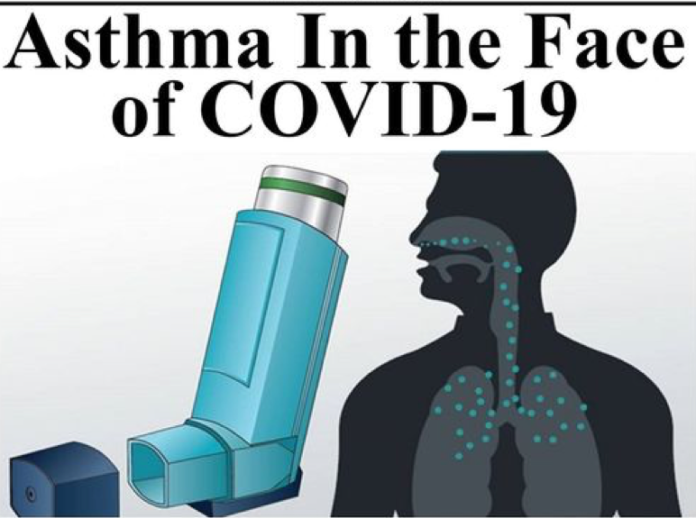By Christian Conte
2020 was an exceptionally difficult year for everyone, but for Marie Sesay whose only son suffers from respiratory health challenges, the number of risk factors has been overwhelming. Even before the COVID-19 pandemic caused us to shelter inside and smoke from burning garbage and factories blanketed the skies, Marie’s 12-year-old boy, James, had a hard time breathing.
James’ life has regularly hung in the balance because of severe asthma. On his fifth birthday, he was so ill he did not respond to any medication, leaving his mother fearing the worst. “I will never forget how his tiny chest rose up and down in desperate movements, trying to fill his lungs with air,” James’ mum, Marie, says.
“Growing up with asthma was tough. Not because of the everyday symptoms such as wheezing, suffocation, dry cough, and the perpetual cold. It was hard because of the things he had to give up, and the things he couldn’t have,” Marie explains.
Asthma affects an estimated 300 million individuals worldwide.
Annually, the World Health Organization (WHO) has estimated that 15 million disability-adjusted life-years are lost and 250,000 asthma deaths are reported worldwide. Marie further reveals that James was only eight when a doctor friend advised that he stays away from his pet dog. The doctor suspected that he was allergic to him.
“James was born a healthy baby, but after a couple of months, it was evident that he had poor lung function. A range of factors could trigger his symptoms, such as dust, cold beverages, fur from animals and stuffed toys, smoke, exercise, and dry or cold air. Although his asthma wasn’t as severe as many other children it interfered with many aspects of his childhood life,” Marie says.
In the face of COVID-19 James is even more careful. His environment, however, hasn’t helped him much. He lives at Ferry Junction in close proximity to the city’s biggest dumpsite ‘Bomeh’. It is regular to see a thick quilt of smog wrapping itself around the environment, particularly on Saturdays when large amounts of garbage are emptied at the dumpsite. Doctors and environmentalists have warned that the deteriorating air quality could make the city’s Covid-19 problems even worse.
Medical Officer at the Princess Christian Maternity Hospital (PCMH), Dr. Sulaiman Conteh, says asthma attacks can be really frightening, but some people don’t seek help, despite advice to do so. He reveals that there can be a spike in asthma attacks in the harmattan season and in damp or dusty environments.
“Asthma is a serious global health problem that has become affecting all age groups. It is a chronic disease of the air passages of the lungs which inflames and narrows them. Its prevalence is increasing in many countries, especially among children. Although some countries have seen a decline in hospitalisation and deaths from asthma, it still imposes an unacceptable burden on health care systems, and on society through the loss of productivity in the workplace,” Dr. Conteh explains.
Asthma, he further notes, is caused by a combination of factors including genetic and environmental factors. The environmental factors include smoke, dust, and fog among others. The initial symptoms, he says, include consistent coughing, respiratory distress, (abnormal breathing) tightness of the chest, and wheezing.
Sallay Dumbuya is a Pediatric Nurse who has worked at the Princess Christian Maternity Hospital (PCMH) for over 25 years. She says it is still difficult to know the originating causes of asthma in children. However, if a child has a family history of asthma or allergies, or had a mother who smoked during pregnancy, they have a higher chance of getting asthma early in life.
“A respiratory virus, an illness that occurs in the lungs, is one of the most common causes of asthma symptoms in children 5 years old and younger. Although both adults and children experience respiratory infections, children have more of them. Some preschool children get viral infections often. At least half of children with asthma show some sign of it before the age of 5. Viruses are the most common cause of acute asthma episodes in infants 6 months old or younger,” says nurse Dumbuya.
She further reveals that infants and toddlers have much smaller airways than older children and adults. She points out that as a matter of fact, these airways are so small that even small blockages caused by viral infections, tight airways or mucus can make breathing difficult for the child. In the case of James, the symptoms are usually obvious, to the extent that every family member now knows when he is having an attack. In school, it is even more difficult. The constant worry has taken its toll on everyone, including James himself, who reveals how tired he is with the many hospital visits and procedures. “He can be coughing all night but there is nothing you can do,” says his mother Marie, looking rather frustrated.
According to Dr. Conteh, people with moderate to severe asthma may be at higher risk of getting very sick from COVID-19. COVID-19, he continues, can affect the nose, throat, lungs (respiratory tract); cause an asthma attack, and possibly lead to pneumonia and acute respiratory disease. Meanwhile, nurse Dumbuya encourages people with asthma to be even more careful during the COVID-19 period as respiratory infections can be dangerous and even life-threatening.
One of the most common symptoms of severe coronavirus cases like asthma is breathing difficulty, so if the fresh air suddenly becomes more toxic, as it does around communities in the densely populated capital city of Freetown, these forces make it even harder for children and adults with asthma or other respiratory conditions to breathe.
Ultimately people with asthma or other respiratory health challenges who become infected by the virus might end up in the hospital with severe complications or worse dead. James says he will continue to be more careful in this COVID-19 period as he works hard in school. He reveals his desire to eventually become a medical doctor who will be dedicated to helping children and adults suffering from asthma, whilst appealing to government to provide better, specialised health services to people living with asthma.
The 1948 Universal Declaration of Human Rights mentions health as part of the right to an adequate standard of living (art. 25). The right to health was again recognized as a human right in the 1966 International Covenant on Economic, Social and Cultural Rights.









